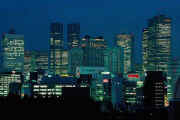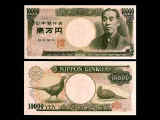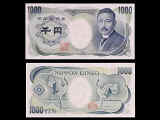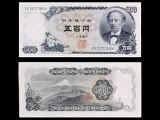|
Economy - overview:
|
|
In the years
following World War II, government-industry
cooperation, a strong work ethic, mastery of high
technology, and a comparatively small defense
allocation (1% of GDP) helped Japan develop a
technologically advanced economy. Two notable
characteristics of the post-war economy were the
close interlocking structures of manufacturers,
suppliers, and distributors, known as keiretsu,
and the guarantee of lifetime employment for a
substantial portion of the urban labor force. Both
features are now eroding under the dual pressures
of global competition and domestic demographic
change. Japan's industrial sector is heavily
dependent on imported raw materials and fuels. A
tiny agricultural sector is highly subsidized and
protected, with crop yields among the highest in
the world. Usually self sufficient in rice, Japan
imports about 60% of its food on a caloric basis.
Japan maintains one of the world's largest fishing
fleets and accounts for nearly 15% of the global
catch. For three decades, overall real economic
growth had been spectacular - a 10% average in the
1960s, a 5% average in the 1970s, and a 4% average
in the 1980s. Growth slowed markedly in the 1990s,
averaging just 1.7%, largely because of the after
effects of inefficient investment and an asset
price bubble in the late 1980s that required a
protracted period of time for firms to reduce
excess debt, capital, and labor. The Japanese
financial sector was not heavily exposed to
sub-prime mortgages or their derivative
instruments and weathered the initial effect of
the recent global credit crunch, but a sharp
downturn in business investment and global demand
for Japan's exports in late 2008 pushed Japan
further into recession. Government stimulus
spending helped the economy recover in late 2009
and 2010, but Tokyo is warning that GDP growth
will slow in 2011. Prime Minister Kan's government
has proposed opening the agricultural and services
sectors to greater foreign competition and
boosting exports through free-trade agreements,
but debate continues on restructuring the economy
and funding new stimulus programs in the face of a
tight fiscal situation. Japan's huge government
debt, which is approaching 200 percent of GDP,
persistent deflation, and an aging and shrinking
population are major complications for the
economy.
|
|
|
GDP
(purchasing power parity):
|
|
$4.338 trillion
(2010 est.)
country
comparison to the world: 4
$4.211 trillion
(2009 est.)
$4.442 trillion
(2008 est.)
note: data
are in 2010 US dollars
|
|
|
GDP
(official exchange rate):
|
|
$5.391 trillion
(2009 est.)
|
|
|
GDP - real
growth rate:
|
|
3% (2010 est.)
country
comparison to the world: 125
-5.2% (2009
est.)
-1.2% (2008
est.)
|
|
|
GDP - per
capita (PPP):
|
|
$34,200 (2010
est.)
country
comparison to the world: 39
$33,100 (2009
est.)
$34,900 (2008
est.)
note: data
are in 2010 US dollars
|
|
|
GDP -
composition by sector:
|
|
agriculture: 1.5%
industry: 22.8%
services: 75.7%
(2009 est.)
|
|
|
Labor force:
|
|
65.64 million
(2009 est.)
country
comparison to the world: 9 |
|
|
Labor force
- by occupation:
|
|
agriculture: 4%
industry: 28%
services: 68%
(2009 est.)
|
|
|
Unemployment
rate:
|
|
5.2% (2010
est.)
country
comparison to the world: 49
5.1% (2009
est.)
|
|
|
Population
below poverty line:
|
|
NA%
|
|
|
Household
income or consumption by percentage share:
|
|
lowest 10%: 4.8%
highest 10%: 21.7%
(1993)
|
|
|
Distribution
of family income - Gini index:
|
|
38.1 (2002)
country
comparison to the world: 74
24.9 (1993)
|
|
|
Investment
(gross fixed):
|
|
20.3% of GDP
(2009 est.)
country
comparison to the world: 83 |
|
|
Budget:
|
|
revenues: $1.839
trillion
expenditures: $2.252
trillion (2009 est.)
|
|
|
Public debt:
|
|
196.4% of GDP
(2010 est.)
country
comparison to the world: 2
192.9% of GDP
(2009 est.)
|
|
|
Inflation
rate (consumer prices):
|
|
-0.9% (2010
est.)
country
comparison to the world: 7
-1.4% (2009
est.)
|
|
|
Central bank
discount rate:
|
|
0.3% (31
December 2009)
country
comparison to the world: 139
0.3% (31
December 2008)
|
|
|
Commercial
bank prime lending rate:
|
|
1.72% (31
December 2009 est.)
country
comparison to the world: 156
1.91% (31
December 2008 est.)
|
|
|
Stock of
narrow money:
|
|
$5.541 trillion
(31 December 2010 est)
$5.162 trillion
(31 December 2009 est)
|
|
|
Stock of
broad money:
|
|
$18.3 trillion
(31 December 2009)
$14.56 trillion
(31 December 2008)
|
|
|
Stock of
domestic credit:
|
|
$16.39 trillion
(31 December 2008 est.)
country
comparison to the world: 3
$13.32 trillion
(31 December 2007 est.)
|
|
|
Market value
of publicly traded shares:
|
|
$3.378 trillion
(31 December 2009)
country
comparison to the world: 3
$3.22 trillion
(31 December 2008)
$4.453 trillion
(31 December 2007)
|
|
|
Agriculture
- products:
|
|
rice, sugar
beets, vegetables, fruit; pork, poultry, dairy
products, eggs; fish
|
|
|
Industries:
|
|
among world's
largest and technologically advanced producers of
motor vehicles, electronic equipment, machine
tools, steel and nonferrous metals, ships,
chemicals, textiles, processed foods
|
|
|
Industrial
production growth rate:
|
|
7.5% (2009
est.)
country
comparison to the world: 33 |
|
|
Electricity
- production:
|
|
957.9 billion
kWh (2008 est.)
country
comparison to the world: 4 |
|
|
Electricity
- consumption:
|
|
925.5 billion
kWh (2008 est.)
country
comparison to the world: 4 |
|
|
Electricity
- exports:
|
|
0 kWh (2008
est.)
|
|
|
Electricity
- imports:
|
|
0 kWh (2008
est.)
|
|
|
Oil -
production:
|
|
132,700 bbl/day
(2009 est.)
country
comparison to the world: 49 |
|
|
Oil -
consumption:
|
|
4.363 million
bbl/day (2009 est.)
country
comparison to the world: 4 |
|
|
Oil -
exports:
|
|
380,900 bbl/day
(2008 est.)
country
comparison to the world: 34 |
|
|
Oil -
imports:
|
|
5.033 million
bbl/day (2008 est.)
country
comparison to the world: 3 |
|
|
Oil - proved
reserves:
|
|
44.12 million
bbl (1 January 2010 est.)
country
comparison to the world: 79 |
|
|
Natural gas
- production:
|
|
3.539 billion
cu m (2009 est.)
country
comparison to the world: 50 |
|
|
Natural gas
- consumption:
|
|
94.67 billion
cu m (2009 est.)
country
comparison to the world: 6 |
|
|
Natural gas
- exports:
|
|
0 cu m (2008
est.)
country
comparison to the world: 84 |
|
|
Natural gas
- imports:
|
|
90.29 billion
cu m (2009 est.)
country
comparison to the world: 3 |
|
|
Natural gas
- proved reserves:
|
|
20.9 billion cu
m (1 January 2010 est.)
country
comparison to the world: 76 |
|
|
Current
account balance:
|
|
$182.3 billion
(2010 est.)
country
comparison to the world: 2
$142.2 billion
(2009 est.)
|
|
|
Exports:
|
|
$735.8 billion
(2010 est.)
country
comparison to the world: 5
$545.3 billion
(2009 est.)
|
|
|
Exports -
commodities:
|
|
transport
equipment, motor vehicles, semiconductors,
electrical machinery, chemicals
|
|
|
Exports -
partners:
|
|
China 18.88%,
US 16.42%, South Korea 8.13%, Taiwan 6.27%, Hong
Kong 5.49% (2009)
|
|
|
Imports:
|
|
$636.8 billion
(2010 est.)
country
comparison to the world: 5
$501.6 billion
(2009 est.)
|
|
|
Imports -
commodities:
|
|
machinery and
equipment, fuels, foodstuffs, chemicals, textiles,
raw materials
|
|
|
Imports -
partners:
|
|
China 22.2%, US
10.96%, Australia 6.29%, Saudi Arabia 5.29%, UAE
4.12%, South Korea 3.98%, Indonesia 3.95% (2009)
|
|
|
Reserves of
foreign exchange and gold:
|
|
$NA (31
December 2010 est.)
$1.024 trillion
(31 December 2009 est.)
|
|
|
Debt -
external:
|
|
$2.246 trillion
(30 June 2010)
country
comparison to the world: 6
$2.231 trillion
(31 December 2008)
|
|
|
Stock of
direct foreign investment - at home:
|
|
$161.4 billion
(31 December 2010 est.)
country
comparison to the world: 24
$147.2 billion
(31 December 2009 est.)
|
|
|
Stock of
direct foreign investment - abroad:
|
|
$831.1 billion
(31 December 2010 est.)
country
comparison to the world: 7
$738.5 billion
(31 December 2009 est.)
|
|
|
Exchange
rates:
|
|
yen (JPY) per
US dollar - 88.67 (2010), 93.57 (2009), 103.58
(2008), 117.99 (2007), 116.18 (2006)
|










